Douglas Sloane “the carpet manufacturer” had the firm build a house in Rye, N.Y. around 1888. The house has been altered and the grounds subdivided, but the main structure is still there:
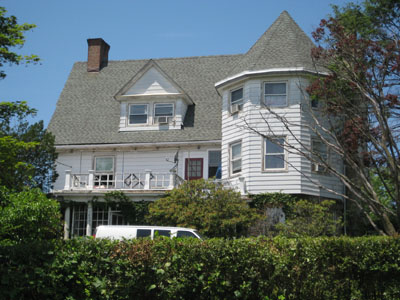
It is possible that the carriage house survives as well.
Lamb & Rich, Architects, and Related Firms
Buildings and Projects 1877-1932
The Smith College news service has photos of the renovations of Northrop and Gillett Houses (1910-1911) and Burton Hall (1913).
During the early-twentieth century building boom that created those buildings, Smith College President Laurenus Seelye retired and commissioned a house near the campus from Charles Rich:
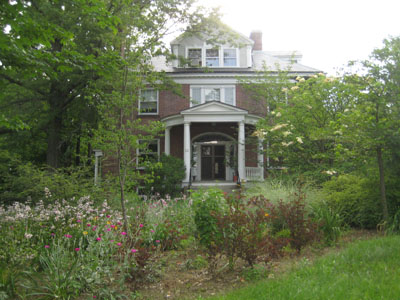
President Seelye’s house (1909)
The entry porch is somewhat similar to that of the firm’s contemporary Baldwin House, a few blocks away:
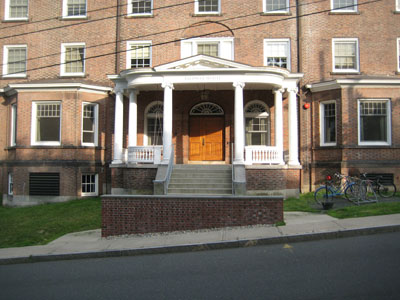
For some time the list of buildings on this site erroneously attributed Christ Episcopal Church in Poughkeepsie (1887, William A. Potter) to the firm. Version 7.7 of the list, posted 06.12.2011, reflected only the correction of this error.
What the firm did design for the church was its Albert Tower, Jr. Memorial Rectory (1903):
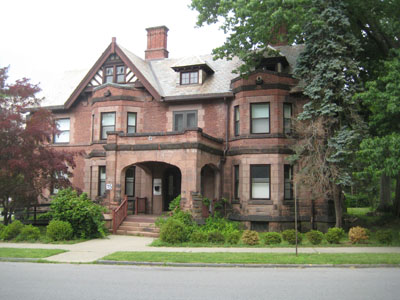
Version 8.0 of the list (pdf) now credits the firm with:
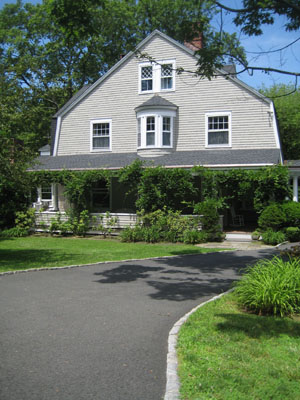
What’s new in version 7.7 of the list? (pdf)
It is not reflected in the short version of the building list, but the client for Wheeler’s two tenements at 159 and 161 East 90th has been identified: John F. Gleason, the well-known billiards man and keeper of one of the city’s best pool rooms, in the Bowery. The 1880 Census describes his occupation as “liquors,” but everywhere else he was a “roomkeeper.” He lived next door to his building project.
Version 7.6 of the list (pdf) also incorporates this new information:
Vandervoort bought the property around 1880; the author of his 1882 house has now been identified. This project could suggest the means by which Theodore Roosevelt learned about the firm before he built his house in Oyster Bay.
Version 7.5 of the list (pdf) also identifies the six houses the firm designed for Gerald L. Schuyler at 307 West 83rd Street and 481-489 West End Avenue. At least two of these survive, one of which is mentioned by Christopher Gray in “The School of the Stepped Gables,” New York Times (30 January 2009).
Other new citations include:
An 1874 design for a villa for Henry T. Williams in Essex County, N.J. by Hugh Lamb. Williams was the editor of The Horticulturist and printed Lamb’s drawings in the journal:
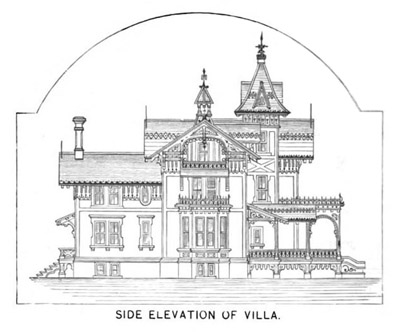
At the time, Lamb’s office was located at 788 Broad Street in Newark, and he advertised exclusively as “H. Lamb.” Thus Williams’s reference to a “Henry Lamb” at that address appears to be an error: no other Newark architect named Lamb been found for this period.
Williams went on to establish a fringe religious group called the Williamites that believed in property ownership by the community (or by Henry T. Williams); prepared for the Second Coming; was persecuted across the West; etc. (see Emery Family Research Association).
—–
[Update 11.10.2012: Broken link to Williamite information replace.]
The Avery Library announced on February 4 that its on-line trove of the Real Estate Record and Builders’ Guide, from 1868 to 1922, is officially available and searchable. A fantastic resource.
There is no longer any need to use the cumbersome process outlined in this 2009 post. The OMH Manhattan N.B. Database remains the only place to look up building permits directly, and it covers 1900 to 1986.
—–
[Update 11.10.2012: Broken link to RERBG fixed.]